Abstract
Speciesism | Ageism | Racism (SAR) is a generative cinematic artwork stemming from the millennia-old practice of mask making and laying claim to the fundamental richness of diversity. SAR generates sequences of masks from photos of people and animals without bias, imbued meaning or particular intent, leaving all interpretations and assumptions to the audience. SAR is aesthetically rooted in traditional folklore and the worldwide popular art of mask-making, in the concepts of “loop” and metric montage. Conceptually, SAR thrives in the intersectionality of postcolonial theory, feminist and anti-discrimination studies, as well as animal rights movements, policies and practices. By stripping away the ability to consistently identify species, age, race, gender or sexual orientation, the artwork allows for a disruptive aesthetic appreciation, which confronts the ideology and politics of group superiority. SAR delivers a participatory, hypnotic, rhythmic and generative audio-visual experience, charged with an anti-discriminatory message countering speciesism, ageism and racism. Speciesism | Ageism | Racism can be enjoyed in its on-line pre-calculated version at https://pedroveiga.com/sar-speciesism-ageism-racism/
Keywords: Cinematic Artwork, Processing, Artivism, Participatory art, Anti-discrimination.
Introduction
Speciesism | Ageism | Racism (SAR) is a generative cinematic artwork, using remixed photographic images and sound samples, re-composed into a new artefact, larger than the sum of its original parts, conveying a new iconography, syntax and semantics.
SAR embodies an artistic collaboration between human creativity and technologically automated procedures, transposing a humanized machine aesthetic onto the screen, whose vocabulary are familiar elements (photographic images of people and animals, human and animal voices, musical instruments, natural atmospheric sounds), algorithmically composed and presented in an also familiar format: cinema.
However, technically, SAR cannot be considered video-art, since its output is computer generated in real-time, virtually endless and non-repetitive. Even though Generative Cinema may not be a widespread genre, it possesses a long history in itself and has its roots in earlier forms, among which is Calculated Cinema.
In any event, here we are trying to consider the first point of confluence between machines, film-makers and computers, which constitute, in some ways, the two greatest poles of reference in 20th century cultural history. At the beginning and end of that same century, both poles have encouraged the idea that art, science and technology ought to converge, since they have several features in common: a meticulous (pre)history, an impact on society, and a variety of cultural uses and offshoots. And, although it may apparently seem as yet a limited episode of just over two decades (60s/70s), with relatively few authors and works displaying aesthetic consistency, the Calculated Cinema series intends to open a window of observation allowing a glance both backwards in time, as well as forwards. (...) Eventually, the idea is to offer an antidote for the digital animation styles which are now hegemonic and omnipresent (Bonet 2007).
In Calculated Cinema, directors such as Sergei Eisenstein and Dziga Vertov laid the foundations of metric or rhythmic montage. According to Manovich and Kratky (2005), this type of approach is at the heart of what the authors present as Soft Cinema. If “hard” cinema is normally based upon a storyline, scripting, shooting and editing guidelines, Soft Cinema is achieved by algorithmically sequencing visual units extracted from a previously constructed database, often including randomness in their selection mechanisms. In Soft Cinema the screen is no longer necessarily occupied by a single-screen image, but rather by a mosaic of images, whose succession is no longer fixed. Each new showing will be different from previous ones, given that the selection of the database units is randomized and usually open to a large number of combinations. Generative cinema inherits characteristics of both Soft Cinema and Calculated Cinema; however, like other generative art forms, it specialises in the delivery modes of a heterogeneous realm of artistic outcomes based upon the combination of predefined elements (order) with different factors of unpredictability (chaos) in its conceptualization, production and presentation (Grba 2017, 8).
Generative processes allow for the introduction of probabilistic and random factors in predetermined rules, thus producing successive generations of audio-visual output (in the present case). Each newer generation depends upon, or inherits, structural and compositional characteristics of the previous generation(s). Therefore, each time a complex generative artwork is executed, the outcome will be different. Throughout the execution there will be observable repeating structures, as well as randomness and non-linearity.
SAR is also influenced by Structural Film, a term coined by Sitney (1979, 348) to describe a more simplified, predetermined art, where form was crucial and content peripheral. Structural Film is characterised by four properties:
- fixed camera position
- flicker effect (strobing)
- loop printing
- rephotography (off the screen)
Even though SAR belongs to a digital generation of artworks, it is conceived over a fixed virtual-camera position, relies heavily on the use of soft strobing, on the digital equivalent of loop printing, and uses rephotography of the original portraits.
Concept
SAR was developed over two major conceptual cornerstones:
- an ontological perspective that questions the righteousness of any group, under the excuse of (self) protection, preservation or survival, to apply morality only within the group itself, denying it to all outsiders – furthermore justifying the exploitation of other individuals, external to the group, with said purposes;
- an aesthetic perspective, inspired by the millennia-old tradition of mask-making, rooted in animism and totemism, as a baseline for extensions of relationships between humans and nature, including shamanism, ritual and mythology, where the ideals of a permeating energy binding every biological and non-biological entity reinforces their interconnectedness and collaborative nature – in clear opposition to modern-day trends of individualism and competition.
We are witnesses of the current empowerment of the allophobia, an irrational aversion of the other (e.g.: the migrant, the religious or ethnic minority), of anything and everything different, foreign, incomprehensible and perceived (but not rationalised) as a threat to the self or the group. Allophobia is rooted in an adversarial vision of the world, which has been used to justify the denial or further reduction of rights and privileges, while tightening the grip on societal and political control (Graft 1997; Gold 2004; Harrison and Parkinson 2014; Asch 2017; González 2020). In past times, the dehumanization of African slaves was partially rationalised by stating that they did not have a soul. Thus they were presented and perceived as less than human, and this argument legitimised and fostered their exploitation (Bordas 2012). A similar attitude was also registered during the Nazi regime, which stripped the Jewish, the Roma, homosexuals and other demographic segments of their humanity during World War II, presenting them as parasitical; or even as modern-day China is reportedly doing with their own elderly (Gao and Bischoping 2018). During the writing of the present article, in the midst of the coronavirus crisis, high-ranking politicians have publicly advocated that letting the elderly die unassisted is a legitimate solution to protect the economy (Beckett 2020, Tobin 2020), and in Spain several elderly patients have been found abandoned, and in some cases dead in their beds in nursing homes (Jones 2020).
This adversarial mind-set runs contrary to an understanding of the cosmos as a rhizome of interconnected, collaborative, mutually dependent entities. The concept of animism was developed by E. B. Tylor (1871) and can be summarised as the belief that inside ordinary visible, tangible bodies and matter there is an invisible and intangible energy: the soul. This can be observed in various societies and even though the general concept is similar in all of them, “each culture [has] its own distinctive animistic beings and its own specific elaboration of the soul concept’’ (Harris 1983, 186), including ‘‘religious beliefs involving the attribution of life or divinity to such natural phenomena as trees, thunder, or celestial bodies’’ (Hunter and Whitten 1976,12). Traditional masks are often an expression of this transcendental interconnectedness. They constitute both an exotic enigma and a familiar presence, due to their widespread use across all eras, occasions and geographical settings – a property shared by very few other somatic techniques and rituals. In several societies, masks were used to represent the personification of natural phenomena, animals and plants, which also implied recognizing a soul in each one, hence reinforcing the connection with animism.
In the words of Pollock (1995, 581):
while the category ‘mask’ may serve as a more or less adequate concept in art or in the museum, it excludes a wide range of masking techniques on the basis of arbitrary plastic criteria. I propose that we treat the objects conventionally called ‘masks’ as only one of a variety of semiotic systems that are related through their conventional use in disguising, transforming or displaying identity, and that masks therefore ‘work’ by coordinating the iconicity and indexicality of signs of identity, as identity is understood in any particular cultural context.
Masks are mostly functional artefacts, a “necessary ritual instrument or cult object” (Segy 1976, 1). Their function has been diverse, from statutory symbols in ancient Rome, where the right to own a wax mask of the self (an imago) was reserved to those who had attained one of the highest offices of the state (Pollini 2007). In North America the Hopi use masks to summon helpful spirits, while Tibetans use colourful masks to chase demons away. In Greece, Japan and China masks were, and still are, used in theatre, as a means of facilitating an actor’s impersonation of a certain character (Finley 1999, 9).
It is therefore appropriate to ascertain that masks have the function of transforming identity, either by modifying the representation of identity, or through its temporary and representational extinction and replacement with a diverse identity. From Pollock’s comprehensive bibliographical review (1995, 582-583), masking can then be regarded as the ritual representational, iconic, emotive, indexical, or disguise transformation of the human into a being of another order. Masks do not always represent spirits, they are not always relevant to psychoanalytic interpretations, nor are they invariably bound to produce an actual transformation in the wearer. Masks are not merely pictures of other beings, but are more fundamentally considered to be ways in which the identity of those beings is attributed to – or predicated of – the mask-wearer as well. What masking achieves, by acting through its own paradoxes, is a richly concentrated means of articulating power, ultimately appealing to psychological and cognitive processes. The author thus deemed appropriate that digital generative masks might be empowered through a generative artwork to represent and question various types of discrimination in modern times, merging ages, genders, races and species into one new entity, one new being, one new mask.
The artwork
Imagery
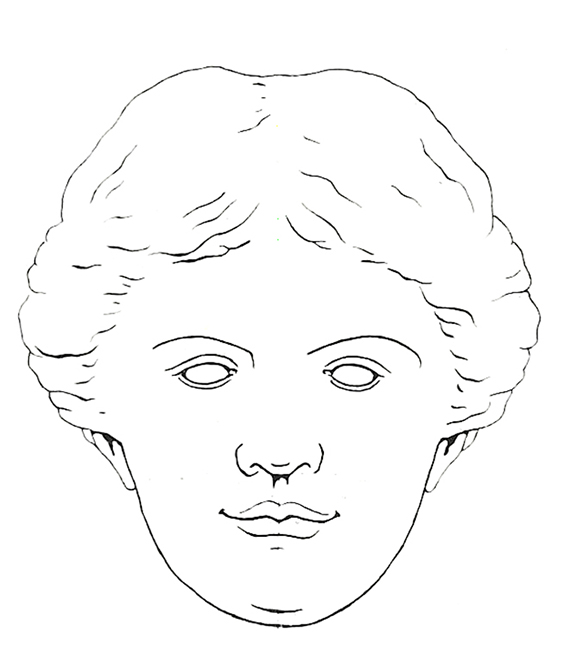
Figure 1 - Example of face positioning. Source: author.
At the soft core of the artwork lies a library of pre-processed images, many of which were donated through participatory collaboration, depicting the donors’ or their pets’ faces.
All these portraits directly face the camera, as exemplified in figure 1.
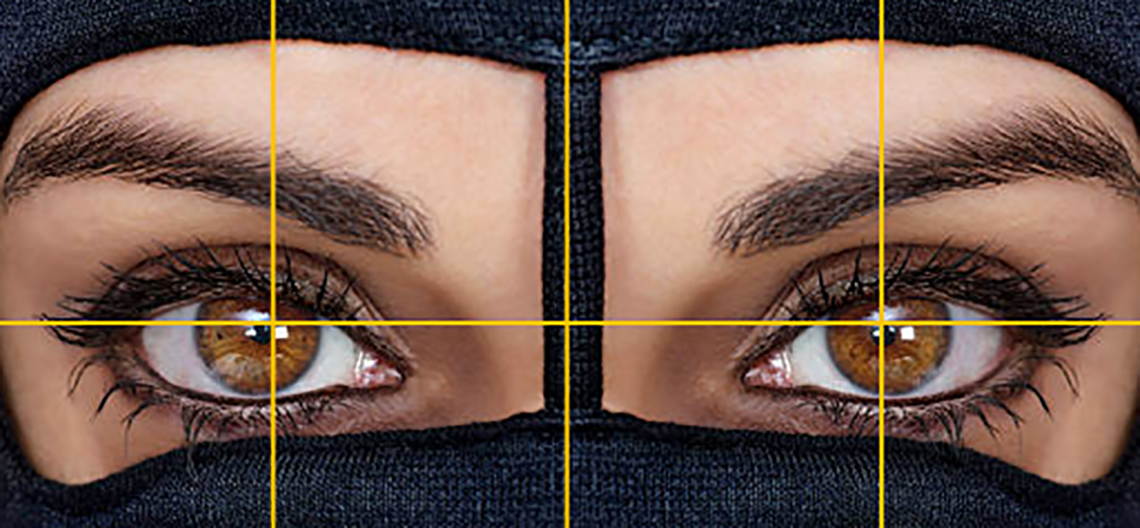
Figure 2 - Aligning the eyes along the yellow reference guidelines. Source: author.

Figure 3 - Aligning the nose along the yellow reference guidelines. Source: author.

Figure 4 - Aligning the mouth along the yellow reference guidelines. Source: author.
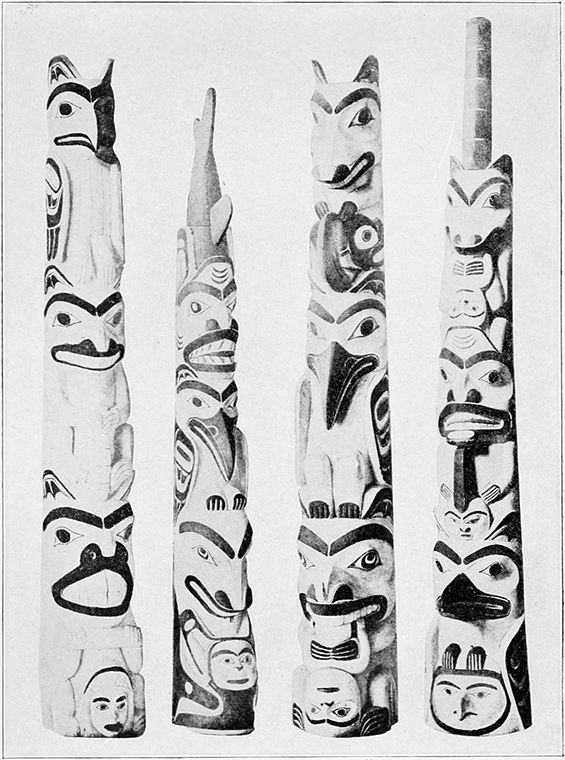
Figure 5 - Haida Totem Poles. Source: Katharine Berry Judson, public domain.
Each portrait was then cut into three horizontal strips in order to align eyes, nostrils and mouth according to reference positions, as shown in figures 2, 3 and 4, so that their animation results in relative overlapping.
The vertical stacking of these three slices is not only used to construct a new mask, but also reminiscent of the stacking process present in totems, where different interdependent entities are vertically stacked along an axis of symmetry, establishing their interconnectedness, as shown in figure 5.
Since each photo may present slight deviances from a perfect symmetry, the alignment of any three horizontal strips from varied sources may not always be perfect, but this apparent imperfection actually adds to the beauty of the end result – just as adding controlled chaos to an otherwise perfectly regular system not only enhances its complexity, but its interest as well. According to Davis,
a simple explanation of this property of art is that the human mind is itself constrained to find appealing those visual and auditory event combinations that share properties of both symmetry and asymmetry, hierarchical complexity and subtle disorder, and that combinations of these loosely-defined properties tend to place interesting pieces in the centre of this spectrum (Davis 1997, 1).
The system of generative aesthetics aims at a numerical and operational description of characteristics of aesthetic structures (which can be realized in a number of material elements) which will, as abstract schemes, fall into the three categories of the formation principle, distribution principle and set principle. These can be manipulated and applied to an unordered set of elements, so as to produce what we perceive macro aesthetically as complex and orderly arrangements, and micro aesthetically as redundancies and information. (Bense 1971)
Combining random, non-repetitive combinations of all the available categorised slices generates each new mask. The system then assigns a dominant hue, which changes smoothly throughout the animation. Some of the combinations may be entirely animal, entirely human, or a mixture of both, as shown in figures 6, 7 and 8.
The masks are surrounded by a flickering matrix of concentric compositions, reminiscent of petri dishes, where samples of the used images are stroboscopically displayed and replaced, in a reference to the largest laboratory of all: nature.
Through the recombination of images that were captured at different times and locations, SAR is also remixing space and time, not only diluting the distinction between species, age and race, but also between territories and borders, and between past, present and future. And yet there is an unquestionable reference to Time that permeates the artwork.
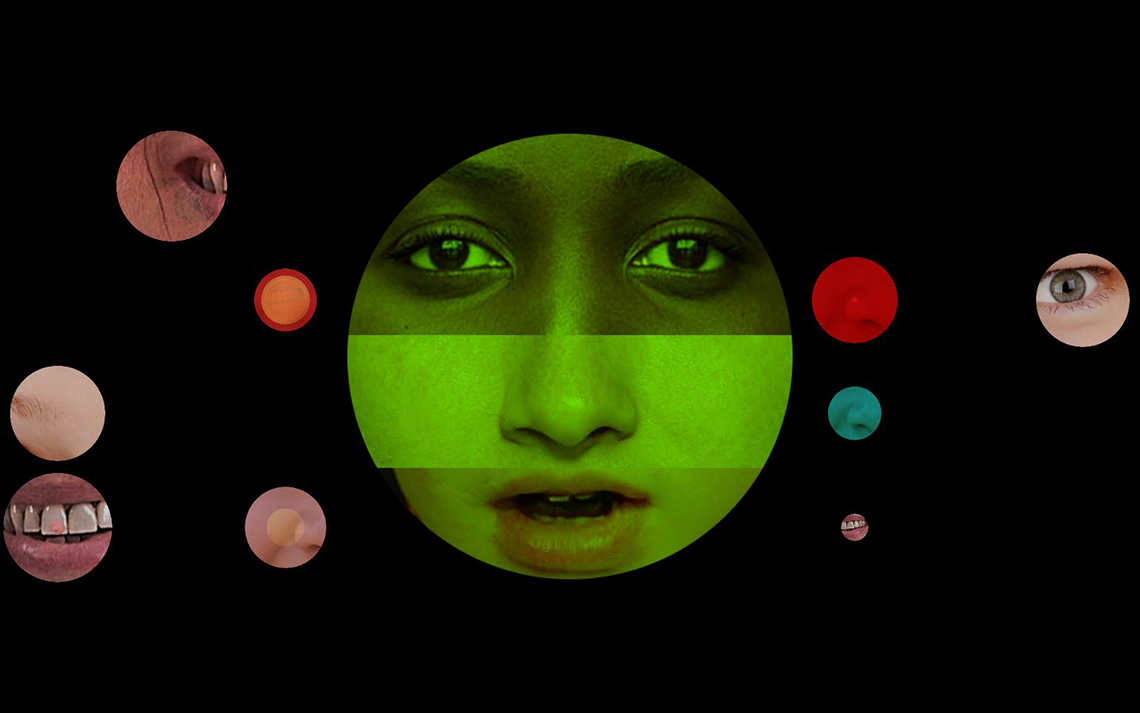
Figure 6 - A generative mixed (age, gender, race) human mask. Source: author.
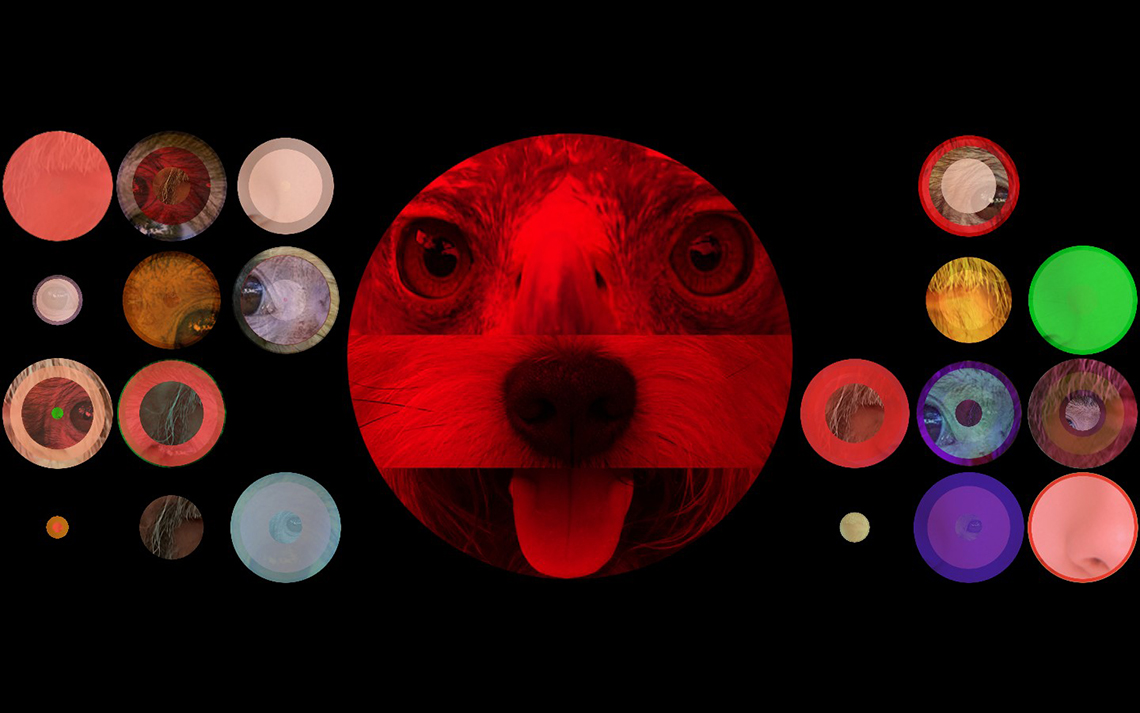
Figure 7 - A generative mixed (race, species) animal mask. Source: author.
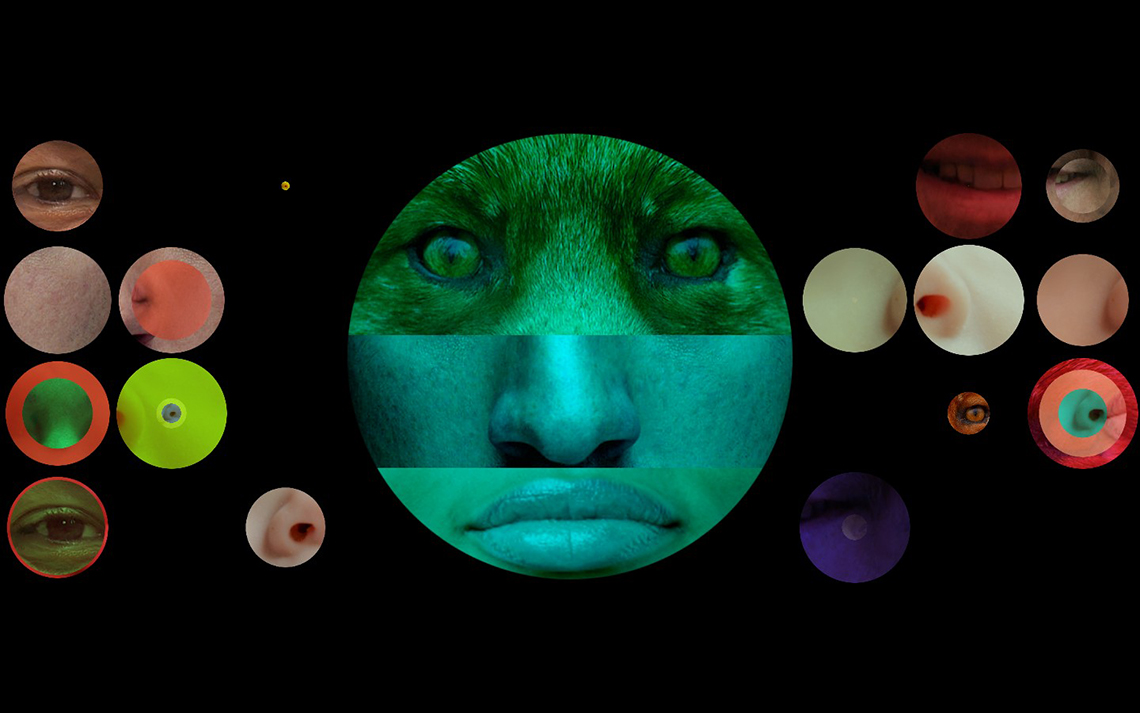
Figure 8 - A generative fully mixed (age, gender, race, species) animal mask. Source: author.
Cycles
(...) the relationship of input-time and output-time is much more complex – e.g., in some extreme situations or in dreams our whole life can be experienced as a flashback compressed into a split second (the survivors from air crashes or ski accidents tell of it often) ... or, as in the example of Proust, one can brood over a brief childhood experience practically all of one’s life in the isolation of a cork-lined room. That means, certain input-time can be extended or compressed in output-time at will... and this metamorphosis (not only in quantity, but also in quality) is the very function of our brain which is, in computer terms, the central processing unit itself. The painstaking process of editing is nothing but the simulation of this brain function (Paik 1976, 98).
Nam June Paik translated the metrics of space (the frame) into the metrics of time, which he manipulated in order to produce his video installations. Following the same principle, now applied to digital media, SAR uses the algorithmic version of metric montage, as theorised by Eisenstein (Mayne 1975), in which a temporal (rather than spatial/frame) unit of calculation is used, transposing the musical concepts of rhythm and tempo onto the field of the moving image.

Figure 9 - A cycle in SAR, where each sub-cycle (each section between the black vertical dashed lines) corresponds to a quaternary compass of the soundtrack, lasting exactly 8000 milliseconds, thus synchronizing the rhythm in the soundtrack with the moving images. Source: author.
These time intervals allude to the rhythm that exists in the life of the visibly represented subject – the mask – and convey the flow of that subject’s life-process through temporal animation. When the data set is replaced (signalled by the black vertical dashed lines, and tagged with the boxes at the bottom of figure 9), a new mask is created, and the process repeated.
The “flicker form”, as Sitney (1979, 288) puts it,
is the vehicle for the attainment of subtle distinctions of cinematic stasis in the midst of extreme speed which can be presented so as to generate both psychological and apperceptive reactions in its spectators.
SAR was programmed to run in flickering sub-cycles within an encompassing cycle. This structure was primarily inspired by the life cycle of all living beings, their successive changes and transformations, some of which may be rather extreme (e.g.: caterpillar to butterfly, the shedding of skin in reptiles, puberty, menopause). In each sub-cycle of the mask generation, the ageing process is illustrated by the growing presence and animation of the petri dishes, feverishly filling up the whole matrix. For example, figure 6 was captured at an early sub-cycle, whereas figure 7 was captured at a more advanced sub-cycle.
When each cycle approaches its end (or life-expectancy), the animation also changes: the masks are replaced by two pulsating words, presented in linear non-repetitive sequence – “live” and “die”. “Live” slowly gives way to “die”, at which point the whole screen will go dark, only to give birth to another cycle.
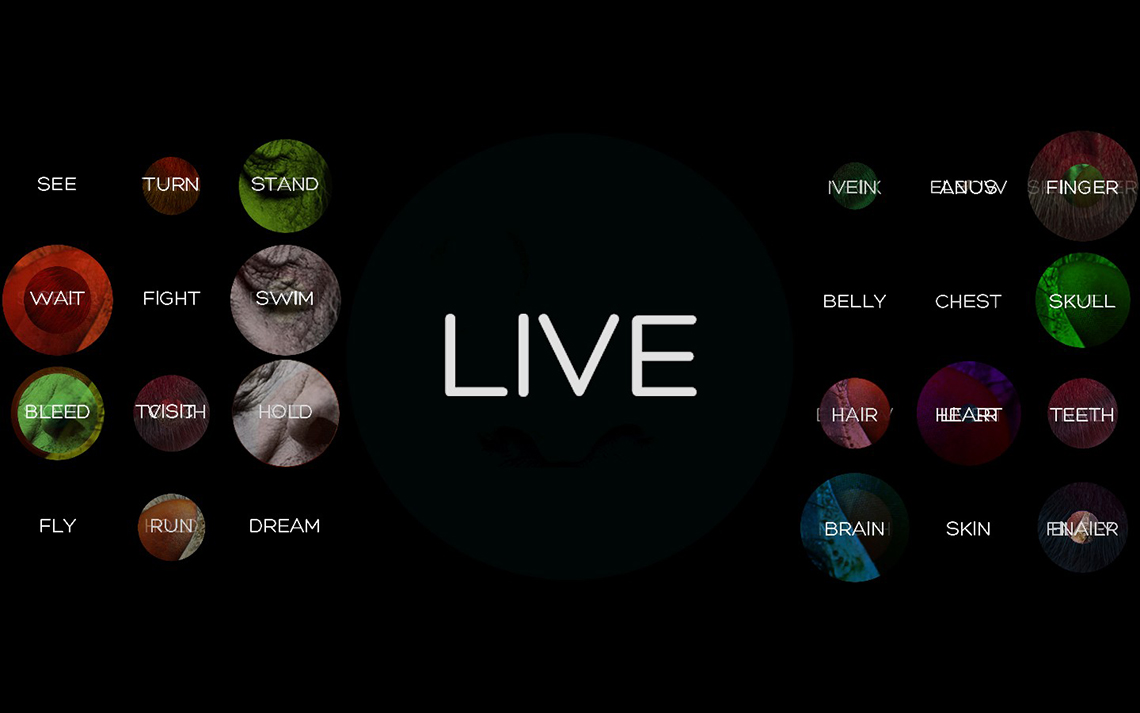
Figure 10 - The sub-cycle of living, with actions on the left and organs and body parts on the right. Source: author.
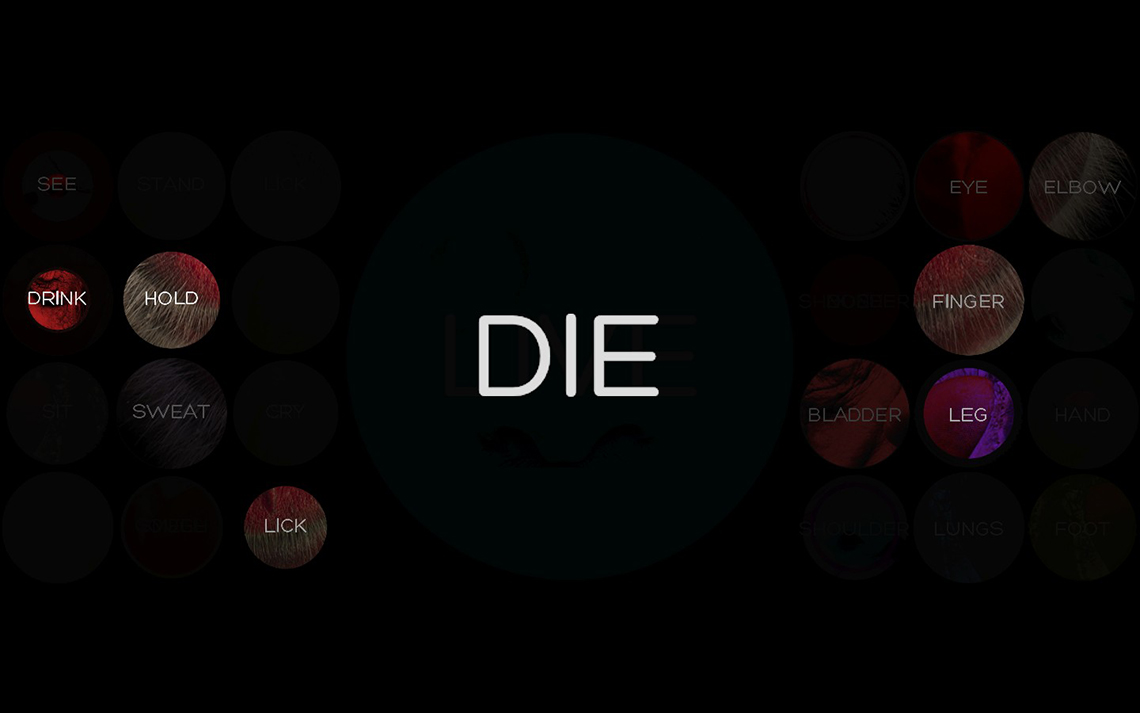
Figure 11 - The final part of the cycle – the death sub-cycle – with increasingly slower animations and fading colours. Source: author.
While both words are displayed, and to further accentuate the similarities between species, races and ages, various nouns and verbs are also displayed over the petri dish matrix: to the left, a list of verbs, depicting actions that may be common to the majority of living beings (e.g.: see, dream, fly), and to the right a series of nouns, referring to their organs and body parts (e.g.: heart, leg, skin), as shown in figures 10 (fading life) and 11 (incoming death).
These cycles are structurally reminiscent of the concept of “loop”, which has become one the most prevalent modes of presentation in video-art (Abramovic 2002, 14), and has also been made increasingly popular in recent years by the on-going sharing of animated GIF images on social networks.
From an artistic perspective, the loop allows for a temporal processing that can lengthen the experience by requiring the observer to attend to and process time-related information, to more carefully observe what was irrelevant beforehand, to deepen their understanding and immersion. In other words, the potentially endless structural repetition of a short scene may lead to an extension of time, at least at the level of judgment, perception, and experience (Ross 2006, 19).
SAR addresses the loop from a generative perspective by changing the content of each new cycle generation (both in terms of soundtrack and images), but not the loop structure and duration. Though similar in structure, each loop/cycle is different, providing both the familiar and the unexpected, seriality and network.
Franz (1978, 31) compares time to a rotating wheel with differentiated outer and inner rings:
- The outermost ring is ordinary communal time, with a faster linear velocity than all others rings.
- The next, slower ring is aeonic time, which lasts infinitely longer than ordinary time.
- The innermost ring is Eliade’s illud tempus, the atemporal moment of creation.
- At the very centre is the non-rotating axis of the wheel, which remains permanently quiet, outside movement and time.
While the spatial metaphor of a loop is a circle, the observer’s perception actually moves between these rings, as the invitation to dive deeper into the mantra imbued trance is accepted.
Thus, a more appropriate metaphor would actually be the spiral, with a repeating structure and a deepening understanding, generating an experience of infinite time.
Soundtrack
A soundtrack composed in real-time, using samples and time-based events to achieve synchronicity with the visual animation, reinforces SAR’s cinematic experience. For this purpose several different samples were produced, whose durations are multiples (or submultiples) of a single quaternary bar, in this case corresponding to 8000 milliseconds, thus the samples’ durations may be multiples and submultiples (e.g.: 2, 4, 8, 16 seconds), depending on their function: rhythmic samples will usually be 8 seconds or longer, while effects and accent sounds may be shorter.
These samples were produced from ambient noises (wind, rain, insects and birds), as well as distinct tribal rhythms and instruments from all over the world. These were then mixed through digital sound effects and synthesis. There are also several human voices uttering “I am” in different languages, recorded through the Google Translate voice synthesis function. Each sample is categorised in terms of function – ambient, effect, accent, and rhythm – and is loaded at pre-determined intervals, matching the replacement of the mask slices (eyes, nose and mouth). As each sub-cycle starts, more loops are added to the on-going soundtrack, contributing to an effective audio crescendo, in line with the growing occupation of the screen.
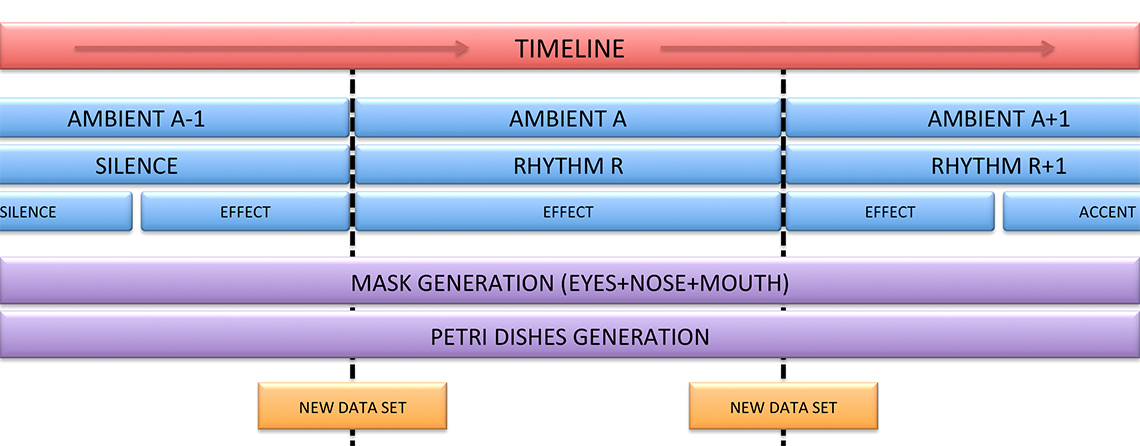
Figure 12 - Part of the cycle timeline, showing the sound generation (blue) and image generation (purple) tracks, and data set replacement (black vertical dashed lines) moments. Source: author.
Overall the system is synchronised to start at 120 beats per minute (bpm) and to evolve up to 240 bpm. These settings fall within the scientifically established brain wave synchronization with rhythmic drum sounds, between 1 and 8 Hz (1 Hz = 60 bpm). They also fall within the limits studied in shamanic trance states (Gingras, Pohler & Fitch 2014), thus complementing the visual ethnic references with their auditory counterpart.
This evolving generative soundtrack is produced in perfect synchronization with the image generation algorithm, as shown in figure 12, with specific effect and accent moments, namely when the data-sets are refreshed or when the masks sub-cycles give way to the “live/die” closing sub-cycles.
In terms of the soundtrack, these special closing sub-cycles are characterised by the replacement of all rhythmic samples by that of a slowly fading heartbeat. At the end of each full cycle the soundtrack restarts to a new generative combination, with different samples producing new combinations, in order to deliver novel auditory stimuli and different atmospheric soundscapes to the audience.
SAR is entirely coded in 653 lines of Processing 3.3.7, and uses the Beads library for sound manipulation (Merz 2011).
Participation
SAR is a participatory artwork, with an on-going open call for participation (Veiga 2019), which consists on the donation of portraits (face only), both human and non-human, explicitly consenting to their inclusion and exhibition in the artwork.
Three requisites need to be fulfilled: (1) the face must be forward facing, looking directly at the camera, (2) each face must occupy most of the framing, with good picture quality and definition and (3) the image resolution must be adequate (minimum of 1000 pixels on the smallest side).
Contributions from thirty-four participants, including some of their pets, from seven different countries across three continents, were received up to the present moment, and they have all been incorporated into the latest version of the artwork. However, at the early stages of development, there already was a need to build a rich and diverse database of both human (spanning across ages, genders and races) and non-human faces (from different species).
To address this need, the author turned to Generative Adversarial Networks (GAN), which can deliver photo-realistic results in high resolution, including effective results in changing hair colour, gender, age, skin tone and emotion of human (and animal) faces (Karras, Laine, & Aila 2019).
SAR thus includes realistic GAN generated images, some of which were directly imported from the “This Person Does Not Exist” project, as the one shown on figure 13, or the “This Cat Does Not Exist” project, on figure 14.
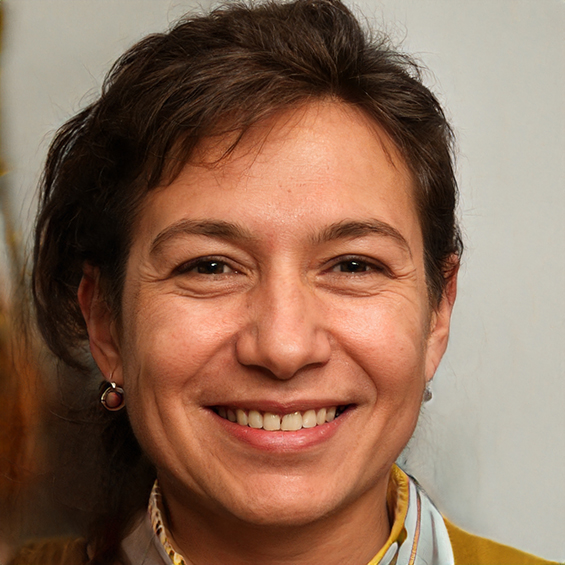
Figure 13 - A non-existing person: photo-realistic image produced by a Generative Adversarial Network, StyleGAN2, developed by Karras et al. Source: https://www.thispersondoesnotexist.com/
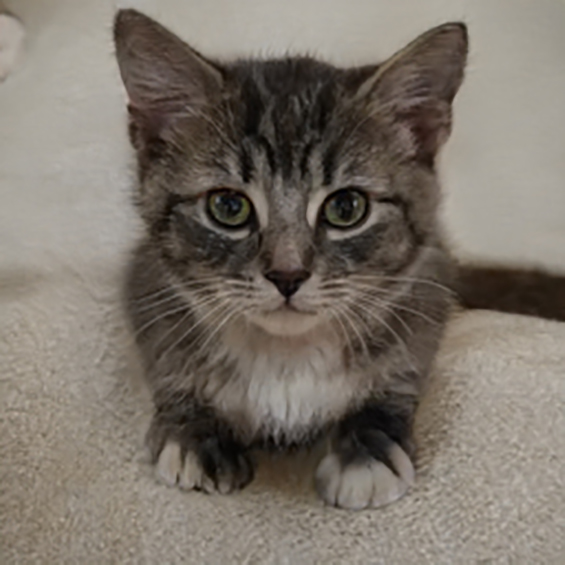
Figure 14 - A non-existing cat: photo-realistic image produced by a Generative Adversarial Network, StyleGAN2, developed by Karras et al. Source: https://www.thiscatdoesnotexist.com/
Exhibition
SAR was first exhibited in 2019, at the Digital and Electronic Art Festival function(“innocence”,2019), in Mallorca, Spain, on the 24th and 25th of May. As a result of its selection for the Festival, two of the organisers also contributed with their portraits (and their pets’. SAR was screened as a pre-calculated looped animation, rather than a generative installation, due to local technical constraints. This instance of the artwork had a total duration of 34 minutes and 40 seconds.
SAR’s dual nature, in terms of exhibition – pre-calculated loop versus generative animation – is actually an advantage, as it allows for the artwork’s presentation in diverse contexts, as was also the case with the exclusively on-line digital art biennial The Wrong, where a shorter, browser-based version was exhibited from the 1st of November 2019 to the 1st of March 2020. For this later version, however, no related participations were received.
Conclusion
SAR is the sum of different inspirations and influences, harnessing the power of both generative art and shamanic iconography, of metric montage and artivism.
These references were used as a means to further enhance the central theme of anti-discrimination with other layers of significance: SAR also addresses the aesthetic context of current generative explorations, simultaneously offering heterogeneity instead of (just) repetitiveness, aiming at disrupting the common perception of generative computer aesthetics, which to this day tends to be mostly abstract (non-figurative), decorative or psychedelic.
During informal interviews with eleven audience members at private screenings, the interviewees were asked to describe the artwork in just one word. The author collected a list of eight words: “beautiful” (2), “funny” (2), “nice” (2), “weird” (1), “amazing” (1), “colourful” (1), “magic” (1) and “hideous” (1).
When asked if the remixing of different species, ages and races was in some way shocking, two audience members stated that although they were “not exactly shocked”, they did not like one or more of the species combinations (thus describing the artwork in one case as “weird” and in the other as “hideous”). None of them felt shocked by the remixing of human ages and races.
It could be argued that, since there is no wearer, SAR does not actually generate masks. The counter-argument, however, is that SAR’s masks are in fact worn at a virtual, psychological level, particularly by its participatory audience members. As they gaze upon the remixed slices and identify their own eyes, nose or mouth, they simultaneously project the remixed entity onto themselves.
This was made clear during the informal interviews, particularly when the identification of the self occurred in a new unappealing entity. In one situation the observer was remixed with insect parts, and in the other with cephalopod parts, thus causing heightened aversion. This was the main trigger for the aforementioned negative one-word descriptions.
The mask is perceived as both a physical ethnographic object type present in all cultures and geographies, and an entertaining photographic filter on most popular video-based mobile chat applications, as exemplified in figure 15. This dual nature ensures that its choice as the central focus of SAR is relevant and current, turning it into an appropriate vessel for the anti-discrimination message, imbuing familiarity into exoticism and vice-versa.
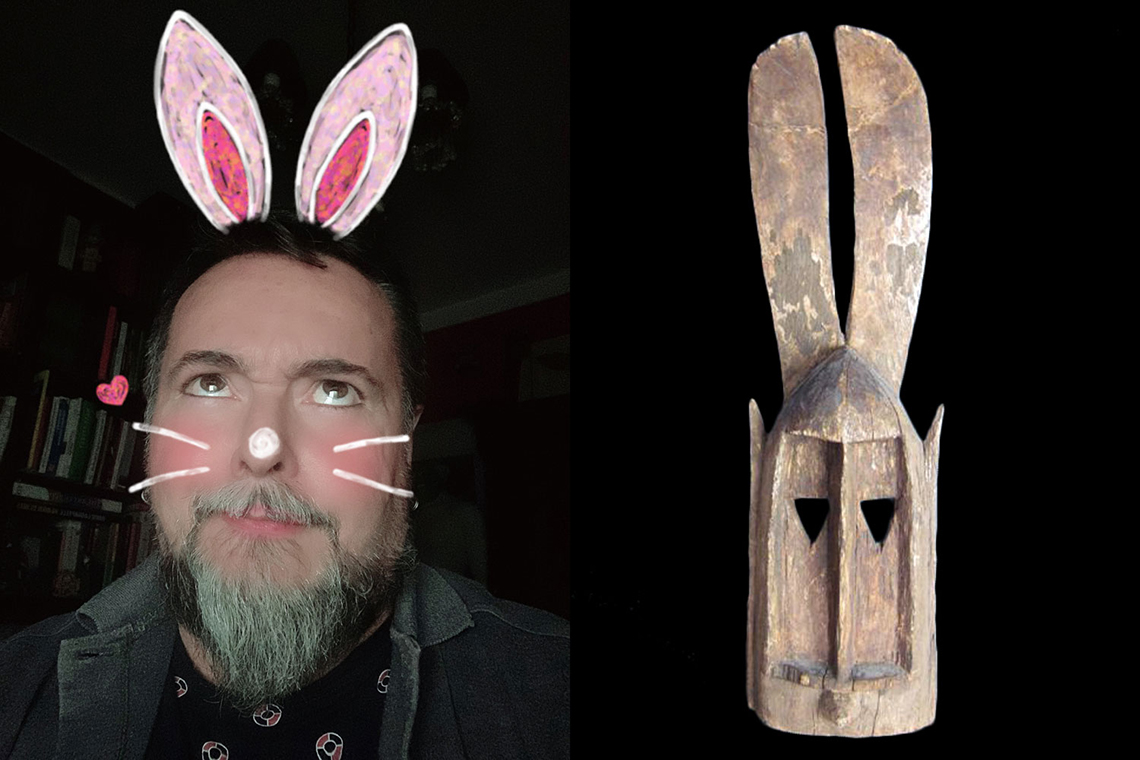
Figure 15 - A rabbit mask filter on a popular entertainment iPhone application, next to a Dogon dymmo (rabbit) mask from Mali, which is used during funerary dances, to guide homeless souls to their resting place in the spirit world. Source: author.
Future developments for SAR may include facial detection and capture of audience members and their real-time inclusion into the animated stream, and also real-time soundtrack control as a function of audience features (number of elements, amount of movement in the room, distance to artefact, among other characteristics the author already tested on other artworks). The above will require that the computational system is powerful enough to deliver a smooth high-quality synchronised audio-visual experience over such intensive calculations.
Speciesism | Ageism | Racism can be enjoyed in its on-line pre-calculated version at https://pedroveiga.com/sar-speciesism-ageism-racism/
Bibliography
Abramovic, M. 2002. “Interview with Marina Abramovic”. In Video Acts: Single Channel Works from the Collections of Pamela and Richard Kramlich and the New Art Trust, Biesenbach et al. (eds). New York: P.S. I Contemporary Art Center.
Asch, Adrienne. 2017. “Critical race theory, feminism, and disability: Reflections on social justice and personal identity.” In Disability and Equality Law, 143-176. Routledge.
Beckett, Lois. (2020). “Older people would rather die than let Covid-19 harm US economy – Texas official”. The Guardian. https://www.theguardian.com/world/2020/mar/24/older-people-would-rather-die-than-let-covid-19-lockdown-harm-us-economy-texas-official-dan-patrick accessed 25th March 2020
Bense, Max. 1971. “The Projects of Generative Aesthetics.” In Cybernetics, Art, and Ideas, Jasis Reichardt, ed.: 207. Greenwich, CT: New York Graphic Society.
Bonet, Eugeni. 2007. Calculated Cinema. Verbindingen / Jonctions 5. Web Archive. http://web.archive.org/web/20160513112103/http://archive.constantvzw.org/events/vj5/calculatedLF.html accessed 18th March 2020
Bordas, Juana. 2012. Salsa, soul, and spirit: Leadership for a multicultural age. Berrett-Koehler Publishers.
Davis, M. W. 1997. “Complexity formalisms, order and disorder in the structure of art”. In International Conference on Evolutionary Programming: 1-12, Berlin, Heidelberg: Springer.
Finley, Carol. 1999. The art of African masks: Exploring cultural traditions. Lerner Publications.
Franz, Marie-Louise von. 1978. Time: Rhythm and Repose. Thames and Hudson.
Gao, Zhipeng, and Katherine Bischoping. 2018. “The emergence of an elder-blaming discourse in twenty-first century China.” In Journal of cross-cultural gerontology 33, nº 2: 197-215.
Gingras, Bruno, Gerald Pohler and W. Tecumseh Fitch. 2014. “Exploring shamanic journeying: Repetitive drumming with shamanic instructions induces specific subjective experiences but no larger cortisol decrease than instrumental meditation music.” In PloS one 9, nº 7.
Gold, Steven. 2004. “From Jim Crow to racial hegemony: Evolving explanations of racial hierarchy.” In Ethnic and Racial Studies 27, nº 6: 951-968.
González, César Rebolledo. 2020. “Imago-politics of migration: mexicanities, xenophobia & the fake ‘other’.” In Im@ go. A Journal of the Social Imaginary 14: 160-171.
Graft, Donald. 1997. “Against strong speciesism.” In Journal of Applied Philosophy 14, nº 2: 107-118.
Grba, Dejan. 2017. “Avoid setup: Insights and implications of generative cinema.” In Technoetic Arts 15, nº 3: 247-260.
Harris, M. 1983. Cultural anthropology. New York: Harper and Row.
Harrison, Joel, and Patrick Parkinson. 2014. “Freedom beyond the commons: Managing the tension between faith and equality in a multicultural society.” In Monash UL Rev. 40: 413.
Hunter, D. E., and P. Whitten, ed. 1976. Encyclopedia of anthropology. New York: Harper and Row.
Jones, Sam. (2020). “Spanish minister says older people found ‘dead and abandoned’”. The Guardian. https://www.theguardian.com/world/2020/mar/23/spain-distributes-650000-testing-kits-as-coronavirus-deaths-rise-steeply accessed 25th March 2020
Karras, Tero, Samuli Laine and Timo Aila. 2019. “A style-based generator architecture for generative adversarial networks.” In Proceedings of the IEEE Conference on Computer Vision and Pattern Recognition: 4401-4410.
Merz, Evan X. (2011). Sonifying Processing: The Beads Tutorial. Computer Music Blog. http://www. computermusicblog.com/SonifyingProcessing accessed 18th March 2020
Paik, Nam June. 1976. “Input-time and output-time.” In Video art: an anthology: 98.
Pollini, John. 2007. “Ritualizing death in Republican Rome: memory, religion, class struggle, and the wax ancestral mask tradition’s origin and influence on veristic portraiture.” In Performing Death: Social Analyses of Funerary Traditions in the Ancient Near East and Mediterranean: 237-85.
Pollock, Donald. 1995. “Masks and the Semiotics of Identity.” In Journal of the Royal Anthropological Institute: 581-597.
Ross, Christine. 2006. “The Temporalities of Video: Extendedness Revisited.” In Art Journal 65, nº 3: 82-99. doi:10.2307/20068483.
Segy, Ladislas. 1976. Masks of black Africa. Courier Corporation.
Sitney, P. A. 1979. Visionary Film: The American Avant-Garde 1943-1978. Second Edition, Oxford University Press.
Tobin, Jonathan. (2020). “In Italy’s Coronavirus Crisis, the Elderly Are Left to Die. Will Trump Let America Follow?”. Haaretz. https://www.haaretz.com/us-news/.premium-in-u-s-coronavirus-crisis-will-trump-save-the-elderly-or-condemn-them-to-death-1.8687478 accessed 25th March 2020
Tylor, Edward Burnett. 1871. Primitive culture: researches into the development of mythology, philosophy, religion, art, and custom. Vol. 2. J. Murray, ed. Google Play. https://play.google.com/books/reader?id=AucLAAAAIAAJ&hl=en_GB&pg=GBS.PP1 accessed 18th March 2020
Veiga, Pedro. 2019. SAR - Speciesism | Ageism | Racism. pedroveiga.com. https://pedroveiga.com/sar-speciesism-ageism-racism/ accessed 18th March 2020